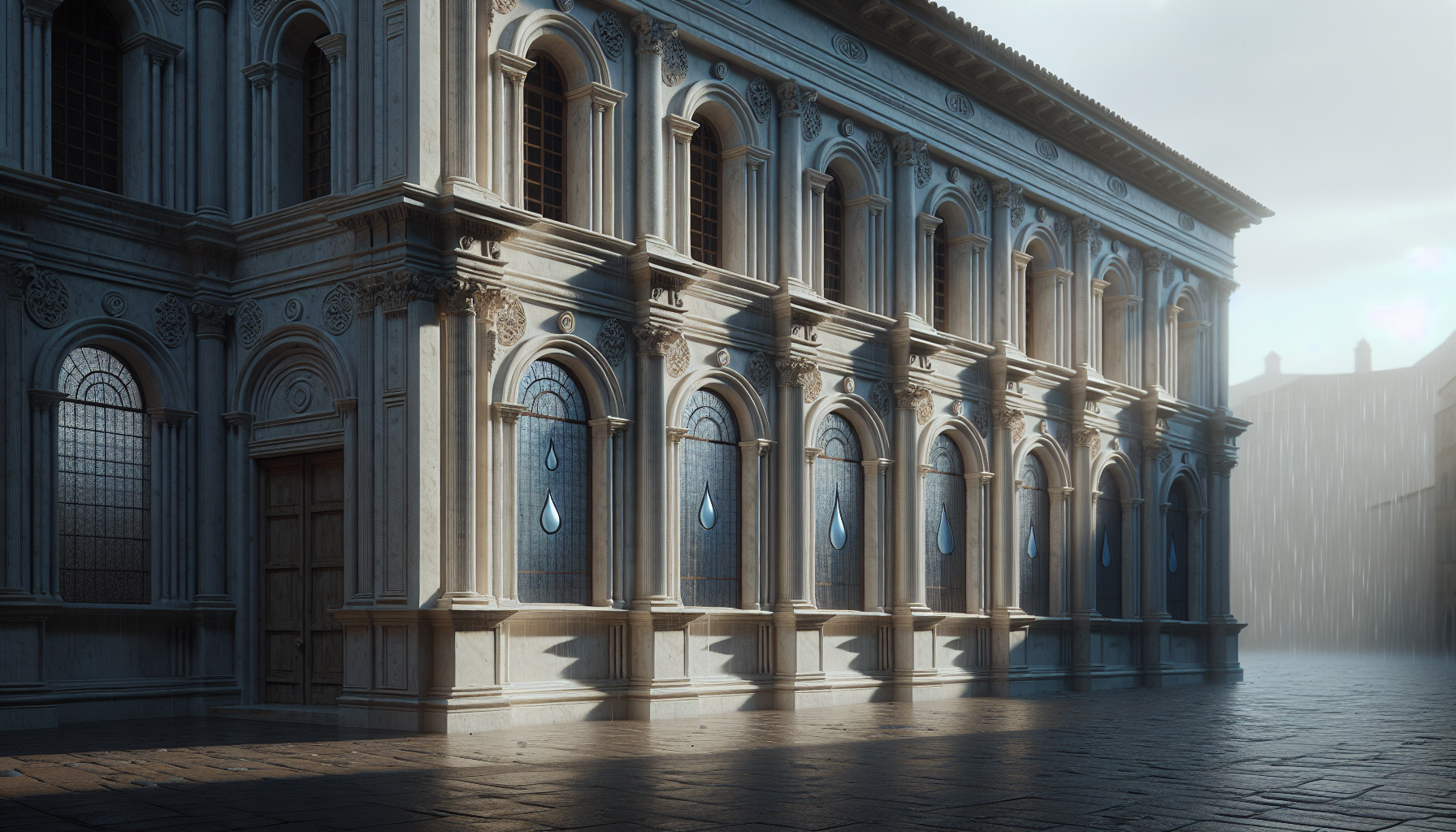Architecture is often celebrated for its grand designs, innovative structures, and the ability to shape the skylines of cities around the world. Yet, beneath its aesthetic and functional layers lies a more profound, often overlooked dimension—its capacity to convey deep, complex emotions. Among these emotions, sorrow stands out as a particularly poignant and evocative force. In the interplay between space and sentiment, how is sorrow expressed and encoded in architecture? This exploration invites us to uncover the subtle, yet powerful ways in which buildings and spaces communicate grief, loss, and melancholy, offering a silent narrative that resonates with the human experience.
Sorrow in architecture might seem abstract at first glance, yet it is deeply intertwined with history, culture, and human expression. Consider memorials, for instance—structures built not just to commemorate events or individuals, but to embody collective mourning and remembrance. The Vietnam Veterans Memorial in Washington, D.C., with its stark black granite walls inscribed with names, exemplifies how architecture can evoke a profound sense of loss and reflection. Similarly, the Memorial to the Murdered Jews of Europe in Berlin, with its vast field of concrete slabs, creates a disorienting landscape that invites visitors to ponder the depths of human tragedy. These are not mere buildings; they are emotional experiences crafted in stone and space, inviting us to engage with sorrow on a personal and collective level.
Yet, the expression of sorrow in architecture is not confined to memorials. It can be found in the very fabric of cities marked by historical turmoil or natural disasters. Think of the haunting beauty of ruins—structures that stand as silent witnesses to the past, telling stories of devastation and resilience. The bombed-out churches of Europe, remnants of wars long past, or the abandoned buildings in the aftermath of natural calamities like earthquakes, speak volumes through their fractured forms and weathered facades. They are poignant reminders of the impermanence of human achievements and the enduring nature of grief. Through these structures, architects have the power to shape spaces that offer solace and reflection, creating environments where sorrow can be acknowledged and processed.
In this article, we will journey through various dimensions of sorrow as expressed in architecture. We will delve into the historical contexts that give rise to such expressions, examining case studies from around the world that highlight how architects navigate the delicate balance between form and emotion. We will explore the psychological impact of sorrowful spaces on individuals and communities, shedding light on how these environments influence our emotional well-being. Additionally, we will discuss the role of cultural and social factors in shaping how sorrow is encoded in architectural design. By the end, it will become clear that architecture, in its silent yet powerful language, offers a profound means of understanding and engaging with the universal human experience of sorrow. 🌿
Understanding the Connection Between Emotions and Architecture
Architecture is not merely a physical construct; it is a profound expression of human emotion, a reflection of societal values, and a testament to the passage of time. Among the myriad of emotions that architecture can evoke, sorrow stands as one of the most powerful and poignant. But how is sorrow expressed and encoded within architectural forms? To understand this complex relationship, we must delve into the historical, cultural, and emotional facets that inform architectural design.
Throughout history, various architectural styles have been used to convey emotions ranging from triumph to despair. Ancient civilizations often employed monumental architecture to express power and reverence, while the Gothic cathedrals of the Middle Ages channeled a sense of spiritual yearning and somber reflection. These structures, with their towering spires and intricate stained glass, create an atmosphere that evokes both awe and introspection. Modern architecture, with its sleek lines and minimalist designs, can similarly evoke feelings of isolation and melancholy.
In addition to historical context, the geographical and cultural background of a place plays a significant role in shaping how emotions, including sorrow, are expressed architecturally. In Japan, for instance, the traditional use of natural materials and an emphasis on simplicity and tranquility in design often reflect a deep-seated respect for nature and the transience of life, known as “wabi-sabi.” This philosophy imbues Japanese architecture with a subtle, poignant beauty that can evoke a sense of peaceful sorrow. Similarly, the stark, imposing structures of Soviet-era brutalism, with their cold, unadorned concrete, reflect a historical narrative of hardship and resilience, embodying a collective sorrow rooted in socio-political struggles.
The Role of Symbolism in Expressing Sorrow
Symbolism is a powerful tool in architecture for conveying complex emotions such as sorrow. Architects often incorporate specific symbols, materials, and design elements that resonate with cultural or historical significance. For instance, the use of dark, muted colors can suggest a somber mood, while certain architectural features like arches or columns can evoke feelings of nostalgia or loss.
One of the most profound examples of symbolism in architecture is the use of memorials and monuments to honor those who have passed. These structures serve as physical embodiments of grief and remembrance, providing a space for reflection and mourning. The Vietnam Veterans Memorial in Washington D.C. is a poignant example; its simple, reflective surface allows visitors to see themselves alongside the engraved names of the fallen soldiers, creating a powerful, personal connection to the collective sorrow of war.
Architectural Spaces as Emotional Conduits
The spatial experience within a building is another critical aspect of how sorrow is encoded in architecture. The way a space is organized can influence the emotional journey of its occupants, guiding them through feelings of introspection, loss, and, ultimately, catharsis.
In sacred spaces, such as churches or temples, the architecture is often designed to evoke a sense of solemnity and reverence. The high ceilings, echoing halls, and dim lighting create an atmosphere that encourages quiet contemplation and emotional release. These spaces often serve as a sanctuary for individuals to process their grief and find solace in the collective experience of sorrow.
Furthermore, public spaces such as museums and galleries can also serve as conduits for emotional expression. Through carefully curated exhibits and thoughtfully designed interiors, these spaces provide a platform for engaging with difficult emotions and exploring themes of loss and remembrance. The Holocaust Memorial in Berlin, with its stark, labyrinthine structure, immerses visitors in a physical and emotional journey that confronts the profound sorrow of history.
Interactive Elements and Their Emotional Impact
Incorporating interactive elements into architectural design can enhance the emotional experience of a space. Interactive architecture allows individuals to engage with their environment in meaningful ways, deepening their connection to the emotional narrative of the structure.
One example of this is the use of soundscapes or ambient audio within a space. Subtle, ambient sounds can evoke specific emotions, enhancing the atmosphere of a room and guiding the emotional journey of its occupants. In memorials, for instance, the use of quiet, mournful music or nature sounds can create a contemplative atmosphere that encourages reflection and introspection.
Additionally, the integration of technology in architecture can offer new possibilities for emotional engagement. Interactive installations that respond to human presence or input can create dynamic, personalized experiences that resonate on a deeper emotional level. For example, an installation that changes color or pattern based on the viewer’s movement can symbolize the ever-changing nature of human emotions and the personal experience of sorrow.

Conclusion
In exploring the intricate tapestry of architecture as a vessel for human emotion, we have delved into how sorrow, in its many forms, is woven into the fabric of our built environment. Architecture is not just a physical manifestation of aesthetic ideals or functional necessities; it is a profound narrative that captures the spectrum of human experiences. Throughout this article, we have examined various aspects of how sorrow is expressed and encoded in architecture, drawing on historical, cultural, and psychological perspectives.
We began by discussing the historical context of sorrow in architecture, highlighting how different cultures and eras have uniquely expressed grief through their architectural designs. From ancient monuments like the Pyramids of Egypt, which serve as eternal resting places reflecting the somber realities of death, to modern memorials like the Vietnam Veterans Memorial in Washington, D.C., architecture stands as a testament to human sorrow and remembrance. Each structure serves a dual purpose: to honor the departed and to provide solace and reflection for the living.
Furthermore, we explored the psychological impact of architectural spaces designed with sorrow in mind. The interplay between light and shadow, material texture, and spatial arrangement can evoke profound emotional responses. Architects harness these elements to create environments that resonate with the human psyche, allowing individuals to process grief and find meaning. For example, the use of natural light filtering through stained glass in places of worship can symbolize hope and transcendence amidst sorrow.
Cultural interpretations of sorrow in architecture also play a crucial role in our understanding. Different societies embed their unique mourning practices and beliefs into their architectural expressions. In Japan, the minimalist approach to design often reflects the transient nature of life, resonating with the concept of “mono no aware” — a sensitivity to ephemera. In contrast, the opulent architecture of cathedrals in Europe speaks to the grandeur and solemnity of religious and communal mourning.
Moreover, the role of architects as storytellers cannot be understated. Through their designs, architects convey narratives that transcend time and space, bridging the gap between personal grief and collective memory. By embedding symbols and motifs within their creations, they offer a silent dialogue between the past and the present, urging us to reflect on our shared human experience.
The importance of this theme cannot be overstated. As we navigate an increasingly fast-paced world, the spaces we inhabit become more than mere backdrops to our lives. They are active participants in our emotional journeys, providing comfort, reflection, and understanding. By acknowledging and embracing the sorrowful aspects of architecture, we gain deeper insights into our own emotions and those of others.
I invite you, dear reader, to consider how the architecture around you speaks to the universal human experience of sorrow. How do the spaces you inhabit influence your emotional well-being? How can we, as a society, continue to design spaces that honor and reflect our shared emotional journeys?
Feel free to share your thoughts and reflections in the comments below. Your insights are invaluable in enriching this dialogue. If this exploration has resonated with you, consider sharing this article with others who may also find it meaningful. By doing so, you contribute to a broader understanding of how architecture shapes and is shaped by our emotions.
To delve deeper into this fascinating subject, explore these resources:
– [The Emotional Impact of Architectural Design](https://www.architecturaldigest.com)
– [Architecture and the Psychology of Space](https://www.psychologytoday.com)
In conclusion, as we peel back the layers of sorrow embedded in architecture, we uncover a profound connection between our built environment and our inner worlds. Let us continue to appreciate and harness this connection, creating spaces that not only shelter us but also nurture our souls. 🌟
Toni Santos is a visual storyteller and cognitive explorer whose work delves into the mental landscapes of ancient cultures—revealing how different civilizations perceived reality, memory, and meaning long before modern psychology existed. Through symbolic imagery and narrative inquiry, Toni brings to life the divergent ways of thinking that shaped lost worlds.
His creative path is guided by a fascination with non-linear logic, oral cosmologies, and the mythic frameworks that once guided decision-making, emotion, and identity. From memory temples carved in stone to visual languages encoded in textiles, every piece Toni creates reflects the vast cognitive diversity of the human story.
With a foundation in visual design and cultural semiotics, Toni blends analytical depth with artistic expression. His work goes beyond historical reconstruction—it reawakens the embodied, intuitive, and ritual-based intelligence of ancient minds, inviting us to question the assumptions of modern thought.
As the mind behind Vizovex, Toni curates visual studies, essays, and immersive content that explore forgotten epistemologies—ways of knowing that connected people to myth, land, and each other in profoundly different ways.
His work is a tribute to:
The symbolic intelligence of pre-modern cultures
The neural diversity embedded in ancient rituals and storytelling
The deep memory systems that shaped identity and perception
Whether you’re a researcher, an artist, or a seeker of hidden wisdom, Toni invites you to enter a space where cognition is culture, and where the past speaks through signs, cycles, and symbols—one myth, one memory, one mind at a time.





